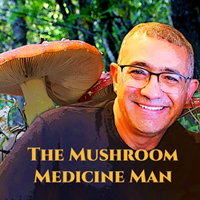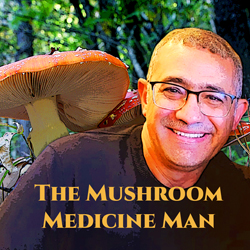It all started when I watched the film “The Truffle Hunters.” The movie took me on a journey through a small Italian town, where a group of elderly men were on a quest to find the most elusive and rare truffles in the world. The film captured the beauty of the forest and the bond that the truffle hunters shared with their beloved dogs. I was amazed at the dedication and passion that these men had for their craft.
The movie left a lasting impression on me, and I promised myself that I would try a truffle dish someday. And I finally did! It was an unforgettable experience, and the taste of the truffle left me wanting more. I found myself scouring the internet for recipes and learning all I could about truffles.
In this blog post, I want to share my newfound love for truffles and what I have learned about them: their history, how they are harvested, and some of the most popular ways to use them in cooking. I hope that this post will inspire other food lovers to try truffles and appreciate their unique flavor and aroma.

“There is a certain romantic allure to cooking pasta with truffle salsa that I simply can’t resist.” -Ayman Daba
Truffles are one of the most highly prized and sought-after culinary delicacies in the world. These aromatic fungi are renowned for their unique flavor, aroma, and texture and are used in a variety of dishes to add depth and complexity to the flavors. There are two main types of commercial truffles: black truffles and white truffles. Black truffles are found in France, Italy, and Spain, and have a strong, earthy flavor. White truffles, on the other hand, are found mainly in Italy and have a more delicate flavor and aroma. Truffles should not be cooked at high temperature, especially the precious white (tuber magnatum). sometimes referred to as the Alba truffle. Shave it thinly over pasta, risotto, and scrambled eggs. Truffle oil and butter are used to add a truffle flavor to a variety of dishes.
Truffles are also known for their health benefits. A rich source of antioxidants, they help protect the body against free radicals and reduce the risk of chronic diseases like cancer and heart disease.
The ancient Greeks and Romans considered truffles to be a luxury food, prizing them for their unique flavor and aroma. Today’s gourmets around the globe eagerly await the start of the white truffle season in October. Demand for this rare truffle far outstrips supply and prices can reach 8,000 dollars per pound in any given year.
Female pigs were traditionally used in truffle hunting. Pigs likely first introduced farmers to the delights of this delicacy. Truffles grow underground and are found because they produce androstanol, a hormone which released by male pigs which females find highly attractive. Pigs became less commonly used due to some drawbacks. They can be destructive to delicate truffle beds as they often tear up the earth in their search. Pigs are also difficult to handle and some countries, like Italy, have made their use illegal. Truffle hunters now prefer dogs although some hunters in France still use pigs. Lagotto Romagnolo dogs are a favored breed.
The Real Truffle Hunters

Julie with truffles
I would like to introduce you to Julie, co-author of this post, a real truffle hunter! Julie was born in Liverpool and studied Italian at university. After completing her degree, she moved to Tuscany to work as a nanny for the young children of a famous chef. It was during her time there that Julie discovered her love for foraging as wild mushrooms were frequently on the menu.
She also met her husband, John, and over the years, they went from mushroom foraging to truffle hunting. The thrill of the hunt, the connection with nature, and the satisfaction of finding something so rare and valuable was a feeling like no other. Julie’s hobby soon turned into a full-time job when she and her husband decided to take up truffle hunting as a profession. They haven’t looked back since. Julie’s children are now grown up and are also white truffle hunters. The family works together in teams, along with their eight truffle dogs. An important aspect of their work is training their dogs to a high level of expertise. The family mostly hunts with wire-haired or Braccho pointers or mixed breeds.

Julie, John and their son.
The team follows three primary species of truffle throughout the year and their life is quite nomadic as they tend to go where the truffles are. This can often mean teaming up with friends from different countries who hunt with them. People often contact them for help locating truffles in their region, which has turned out to be a great way for them to meet new people and to see the world.
In 2019, Julie set up a website and a YouTube channel as a way to connect with other truffle enthusiasts and to find buyers for the truffles they hunt. Despite the difficulties that come with truffle hunting, such as the long hours of searching in various terrains and weather conditions, Julie finds the deep connection she shares with her truffle dogs to be one of the most rewarding aspects of the activity. The bond between hunter and dog is crucial to their success in locating the truffles. The dogs are highly skilled at finding truffles, and Julie relies on them to indicate the location of the truffles, which they dig out of the ground together. Julie’s passion for truffle hunting has taken her all over the south of Europe, where she has lived for the past 35 years with her family. She travels frequently to the UK and the USA to visit relatives, but always returns to her beloved truffle hunting grounds. Julie’s story is a testament to the power of passion and the beauty of nature.
If you’re interested in learning more about the process of using trained dogs for truffle hunting and how to find truffles, I highly recommend watching her videos. They are a fascinating look at how dogs are trained to detect the scent of truffles and how they work in tandem with truffle hunters to locate these highly sought-after delicacies. The Real Truffle Hunters Channel
This video sheds light on the symbiotic relationship between dogs and truffle hunters and provides valuable insight into the world of truffle hunting. It’s an informative and engaging video that is well worth a watch for anyone interested in this unique field.
When I was a child, my aspiration was to study in London and follow in the footsteps of my role model and uncle, Dr. Atef Abdel Shaheed, a physician practicing in London. Instead, I became a highly accomplished chemist recognized by the Royal Society of London. I have always been fascinated by the stories of the Royal family, including the successful cultivation of French black truffles by Prince Philip at the Queen’s Sandringham estate after 12 years of attempts. Prince Philip had planted more than 300 saplings of hazel and oak infused with truffle spores in 2006, but there was no success until 2019 when trained truffle dogs discovered something. Truffles, once considered a luxury only for the elite, have now become a common flavor in shops and restaurants. The world’s most valuable truffle is the white winter truffle, followed by the black winter truffle, which is highly prized for its chocolatey taste. The main type of truffle found wild in the UK is the black variety, which is slightly less sought-after.
This video tells the story of Queen Elizabeth, Prince Philip, and their successful cultivation of the truffles. Fascinating!
Both of the videos shown above are from Julie’s YouTube Channel. Make sure you subscribe so that you get her updates!
Many thanks to Julie for her story. It’s such a pleasure to get to know new people who love mushrooms like I do! If you have a story you would like to contribute, send me a message through the Contact page. If it fits in with what I want to do here, I will feature you!







I am learning so much about mushrooms! Fascinating story!